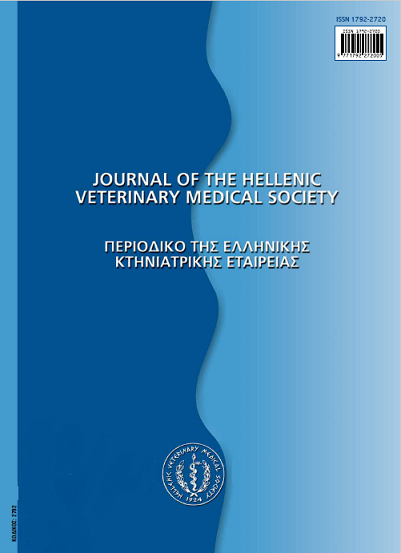Κριτήρια επιλογής ραμμάτων και εναλλακτικοί τρόποι σύγκλεισης τραυμάτων στη χειρουργική των ζώων συντροφιάς
Resumen
Η επιλογή του κατάλληλου ράμματος για τη σύγκλειση ενός τραύματος είναι πολύ σημαντική για την επούλωση αυτού και βασίζεται κυρίως στις ιδιότητες του ράμματος, στο είδος του ιστού και στην κατάσταση του τραύματος. Οι μηχανικές και βιολογικές ιδιότητες ενός ράμματος και το μέγεθός του πρέπει να συσχετίζονται με το είδος και τις ιδιότητες του ιστού στον οποίο πρόκειται να τοποθετηθεί. Ιστοί για τους οποίους αναλύεται ειδικότερα η στρατηγική της επιλογής ραμμάτων στο παρόν άρθρο είναι το δέρμα, ο υποδόριος ιστός, οι περιτονίες, το κοιλιακό τοίχωμα, τα κοίλα όργανα του γαστρεντερικού σωλήνα, τα παρεγχυματικά όργανα, τα όργανα της κατώτερης ουροφόρου οδού, τα όργανα του γεννητικού συστήματος, τα όργανα του αναπνευστικού συστήματος, οι μύες, οι σύνδεσμοι, οι τένοντες, τα οστά, τα περιφερικά νεύρα και τα αιμοφόρα αγγεία. Η παρουσία ραμμάτων σε κάποιο τραύμα αυξάνει την πιθανότητα εμφάνισης φλεγμονής σε αυτό. Όταν ένα τραύμα είναι καθαρό, η ένταση της προκαλούμενης φλεγμονής έχει άμεση σχέση με τις ιδιότητες του ράμματος που επιλέγεται για τη συρραφή του. Η συρραφή των μολυσμένων τραυμάτων πρέπει να αποφεύγεται. Ένας εναλλακτικός τρόπος σύγκλεισης τραυμάτων είναι τα συρραπτικά, τα οποία προσφέρουν σημαντική μείωση του εγχειρητικού χρόνου. Υπάρχουν διάφοροι τύποι συρραπτικών, ανάλογα με τον ιστό και την επέμβαση στην οποία πρόκειται να χρησιμοποιηθούν. Τα συρραπτικά δέρματος βρίσκουν ευρεία εφαρμογή στο δέρμα και σε άλλους ιστούς. Οι συνδετήρες αγγείων συνιστούν εναλλακτικό μέσο απολίνωσης αγγείων. Οι χειρουργικές κόλλες αποτελούν υλικά που μπορούν να χρησιμοποιηθούν σε ορισμένες περιπτώσεις σύγκλεισης τραυμάτων με ιδιαίτερη επιτυχία. Τέλος, τα χειρουργικά πλέγματα αποδεικνύονται χρήσιμα για τη σύγκλειση μεγάλων ελλειμμάτων.
Article Details
- Cómo citar
-
TZIMTZIMIS (Ε. ΤΖΙΜΤΖΙΜΗΣ) E., & PAPAZOGLOU (Λ. ΠΑΠΑΖΟΓΛΟΥ) L. (2017). Κριτήρια επιλογής ραμμάτων και εναλλακτικοί τρόποι σύγκλεισης τραυμάτων στη χειρουργική των ζώων συντροφιάς. Journal of the Hellenic Veterinary Medical Society, 64(1), 47–56. https://doi.org/10.12681/jhvms.15479
- Número
- Vol. 64 Núm. 1 (2013)
- Sección
- Review Articles
Authors who publish with this journal agree to the following terms:
· Authors retain copyright and grant the journal right of first publication with the work simultaneously licensed under a Creative Commons Attribution Non-Commercial License that allows others to share the work with an acknowledgement of the work's authorship and initial publication in this journal.
· Authors are able to enter into separate, additional contractual arrangements for the non-exclusive distribution of the journal's published version of the work (e.g. post it to an institutional repository or publish it in a book), with an acknowledgement of its initial publication in this journal.
· Authors are permitted and encouraged to post their work online (preferably in institutional repositories or on their website) prior to and during the submission process, as it can lead to productive exchanges, as well as earlier and greater citation of published work.




